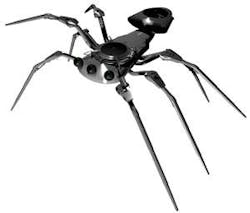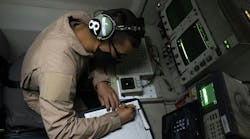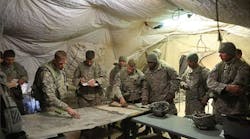By Courtney E. Howard
MERRIMACK, N.H.—U.S. Army, academic, and industry scientists are combining efforts to improve warfighter situational awareness with miniature robots inspired by biologic organisms found in nature.
The U.S. Army Research Laboratory in Adelphi, Md., has signed a $38 million agreement with BAE Systems executives in Merrimack, N.H., toward this goal. BAE Systems engineers in the company’s Electronic Warfare division will lead the Micro Autonomous Systems and Technology (MAST) Collaborative Technology Alliance.
The Alliance will concentrate its efforts on a collection of autonomous, multifunctional, intelligence-gathering miniature robots able to operate in places too small or dangerous for soldiers. Research will center on delivering advanced robotic equipment for urban environments and complex terrain, such as mountains and caves.
“Robotic platforms extend the warfighter’s senses and reach, providing operational capabilities that would otherwise be costly, impossible, or deadly to achieve,” says Dr. Joseph Mait, MAST cooperative agreement manager for the Army Research Lab. “The MAST alliance is a highly collaborative effort, with each partner from government, academia, and industry playing a significant role.”
MAST is designed to benefit future robotic systems by furthering science and technology in sensing, processing, and communications; navigation and control; small-scale aeromechanics and ambulation; propulsion; microdevices and integration; platform packaging; and systems architectures.
Preliminary miniature robot designs point to the use of biomimicry, or biomimetics. That is, the structure and function of the electronic devices are dersigned to mimic those of natural, biologic organisms—in this case, insects.
“The technologies that will be developed under MAST represent capabilities and techniques that will influence nearly all of the products that BAE Systems will develop and produce in the future,” notes Steve Scalera, MAST program manager for BAE Systems. “We and our alliance partners have committed our brightest minds to make the MAST program a success.”
MAST’s four primary research areas, led by four principal alliance members, are: Microsystems Integration led by BAE Systems, Microelectronics led by the University of Michigan, Microsystem Mechanics led by the University of Maryland, and Processing for Autonomous Operation led by the University of Pennsylvania. The alliance also boasts five general members participating in one or more research area. They are: the University of California at Berkeley, the California Institute of Technology and the Jet Propulsion Laboratory, the Georgia Institute of Technology, the University of New Mexico, and North Carolina Agricultural and Technical State University. The current contract covers a period of five years, and includes an option to extend the agreement for an additional five years.
For more information, visit BAE Systems online at www.baesystems.com.





